THEMES ACROSS LAYERS
THEMES ACROSS LAYERS
MATERIALITY
Every decision made by the regime was intentional to the reinforcement of Italian nationalism and imperialism, and the materiality of their architecture was no exception to this. The Fascist connection to the ancient Roman Empire was upheld by their choice of material, as is clearly demonstrated through the mosaic tiles at the Foro Mussolini; the severely Fascist symbols created here were appropriations of the significant mythological icons depicted on the mosaics at the ancient port city, Ostia Antica. Travertine stone, Carrara marble, and Roman brick were popular materials amongst the regime, as they were considered “expressions of the Italian race” due to their local production and ancient references. Conversely, materials that were quarried from foreign locations, like red/purple porphyry from Egypt, illustrated the imperialistic power of Rome.
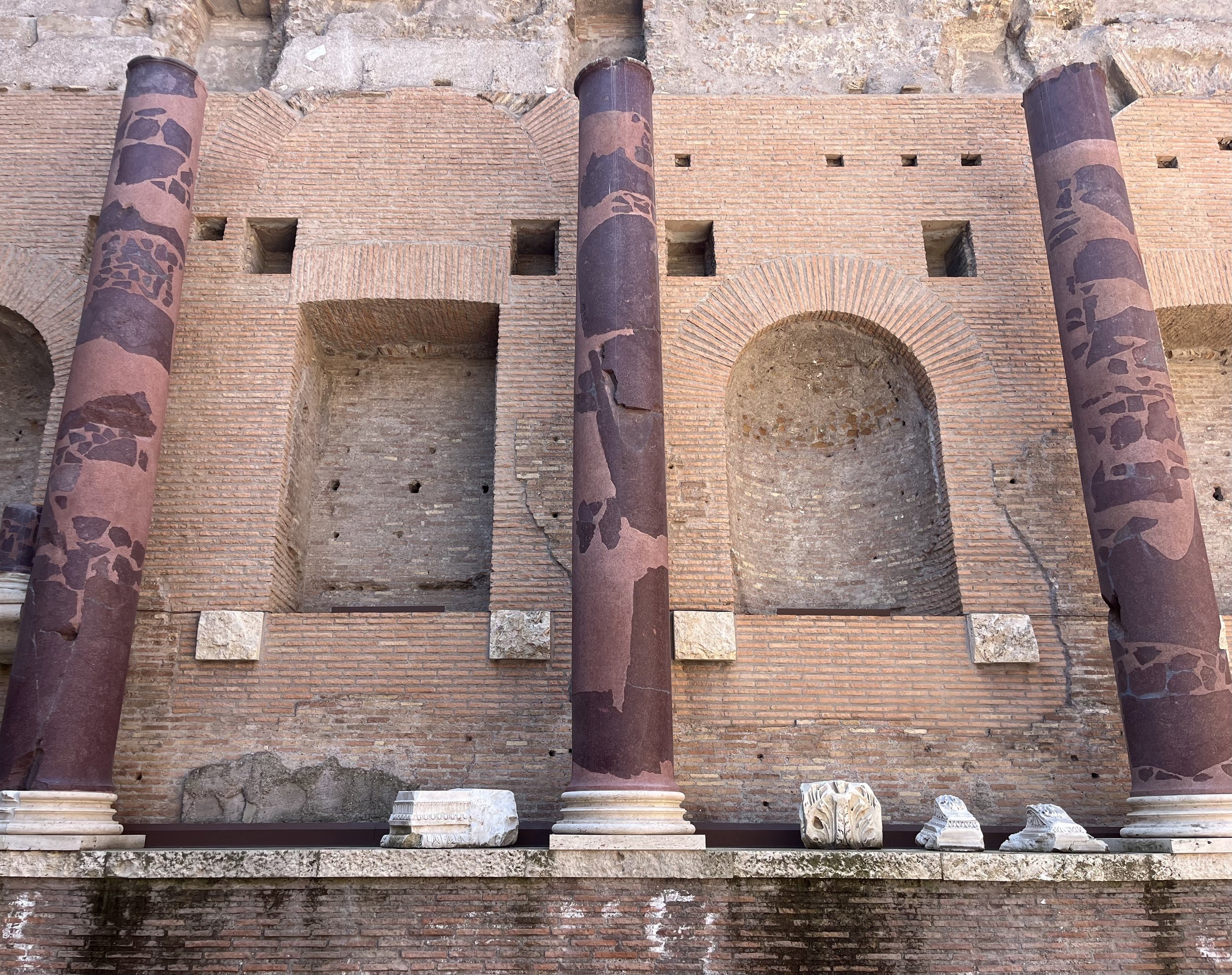
Porphyry columns. Photographed by Lucy Martin.

Travertine columns. Photographed by Makenna Karst.

Ostia Antica Mosaic Tiles. Photographed by Audrey Huhn.

Foro Italico Mosaic Tiles. Photographed by Audrey Huhn.
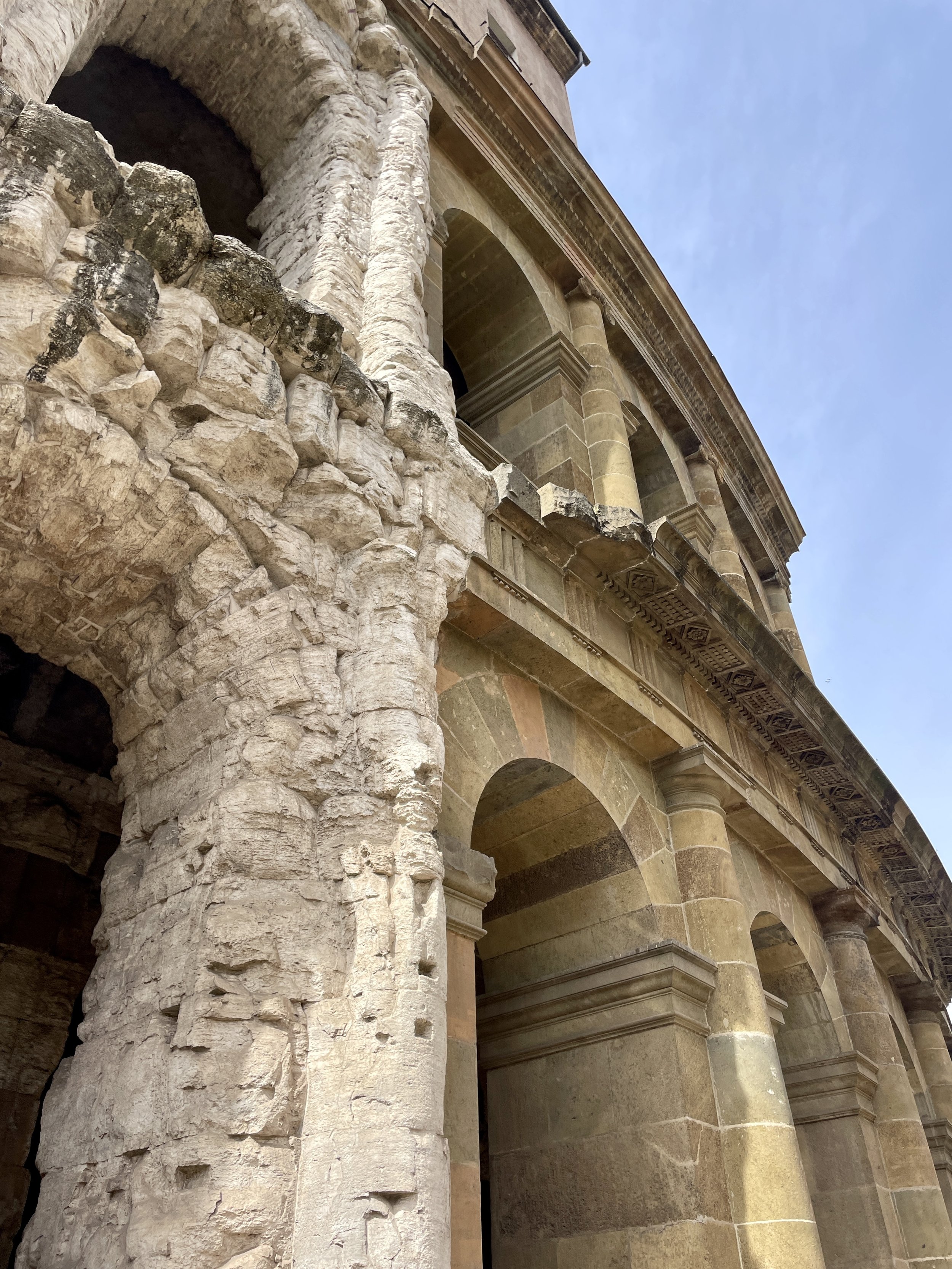
Distinction in material with sperone used on the right, Theater of Marcellus. Photographed by Erin Hobbs.

Material gradient. Photographed by Erin Hobbs.
ICONOGRAPHY
In an effort to cement their ideology in the eyes of the public, the Fascist regime implemented a number of symbols into the vast majority of their building projects. Many of these, like the fasces, Romulus, Remus, the She Wolf, SPQR, and the legionary eagle are taken from Ancient times, used to connect the modern Fascist party with the Roman Empire, inspiring patriotic pride in Italians and serving as a reminder to the rest of the world of the power of Italy. Others, like the logo of the Istituto Nazionale Assicurazioni, are not blatantly Fascist but are associated with the Fascist party through their close workings with the regime, even almost a century later.
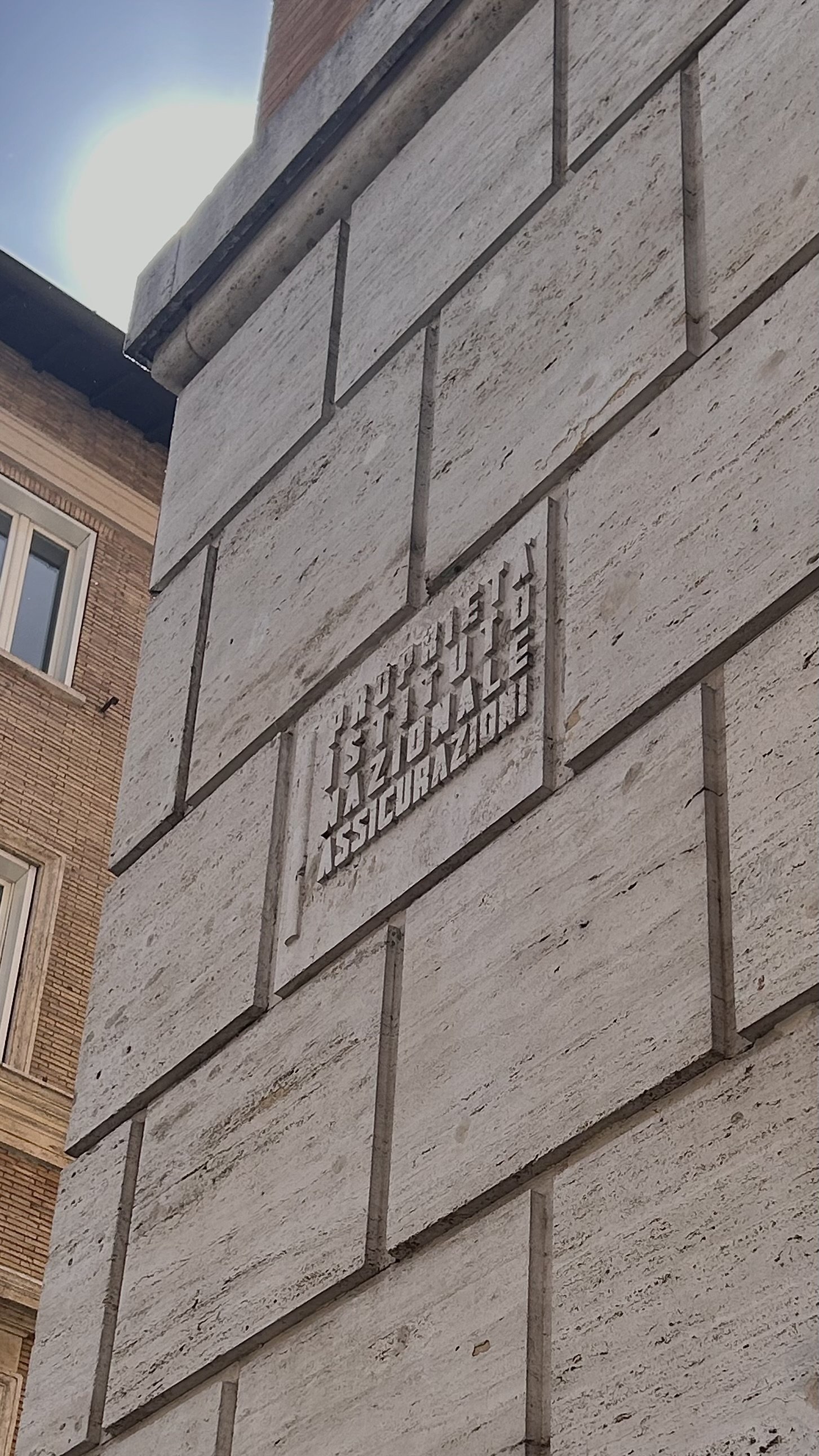
INA logo in Piazza Navona on a fascist-era building. Photographed by Audrey Huhn.
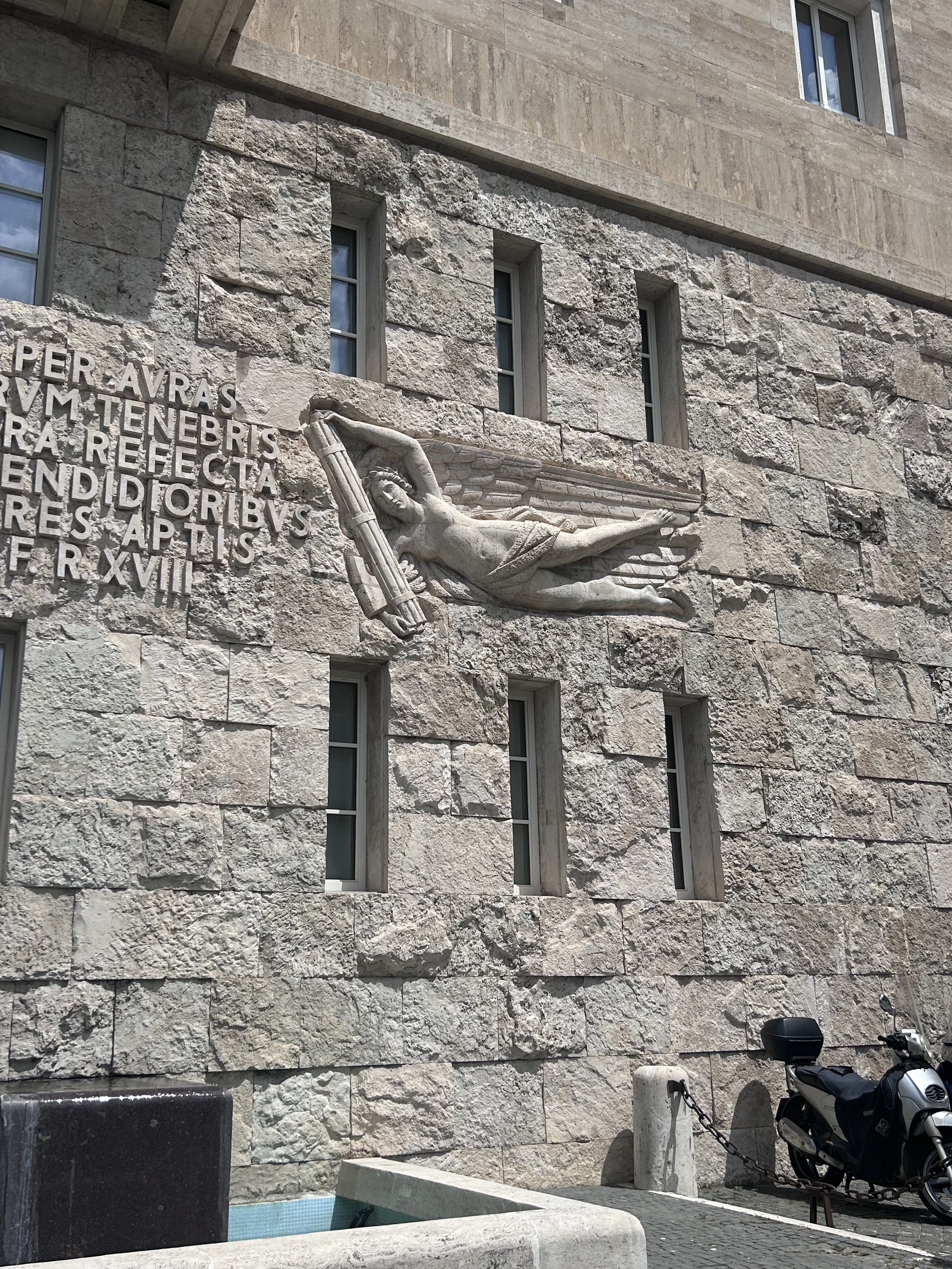
Winged Victory holding a fasces. Photographed by Audrey Huhn.
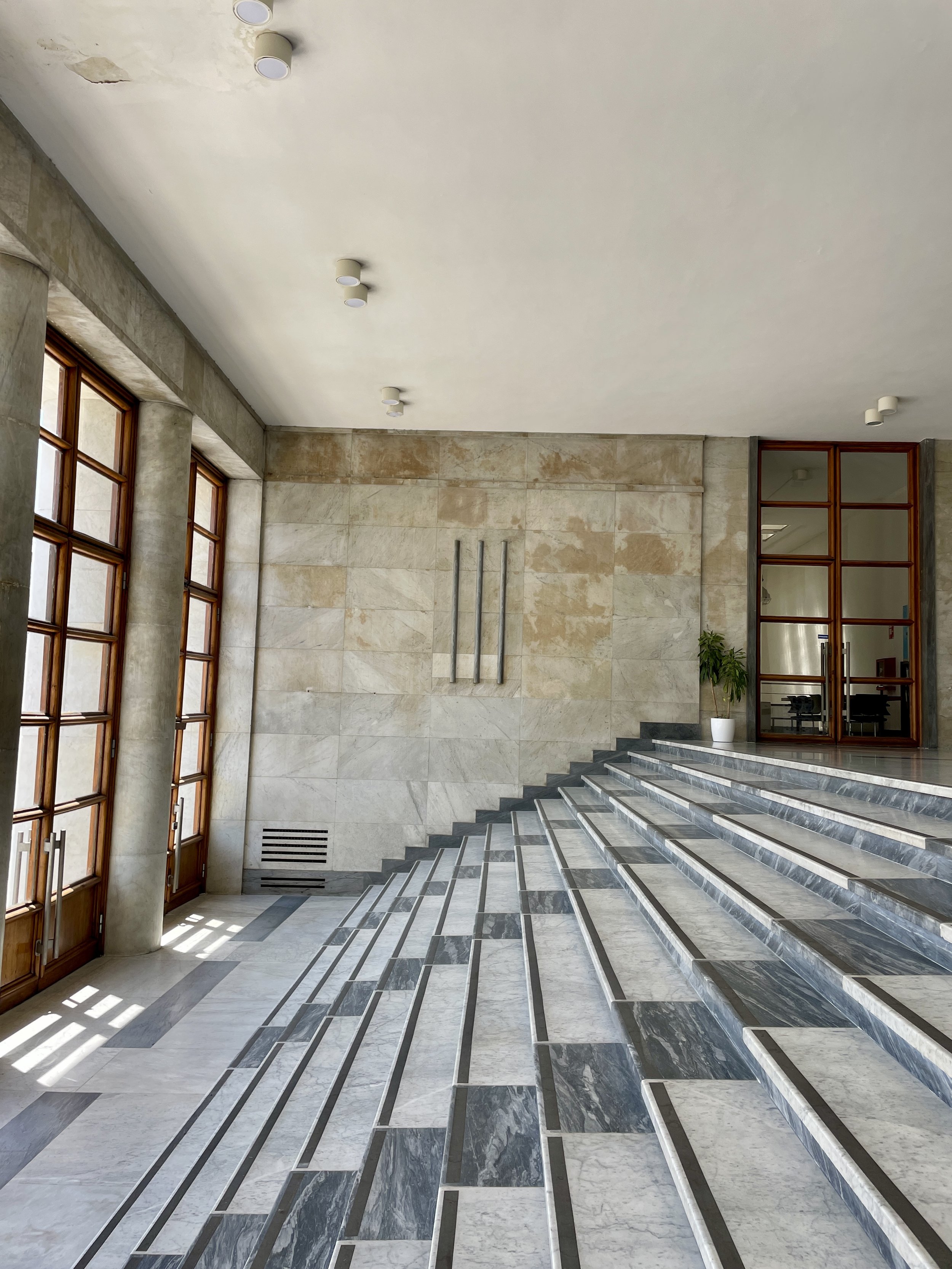
Simplified fasces in an entryway. Photographed by Erin Hobbs.
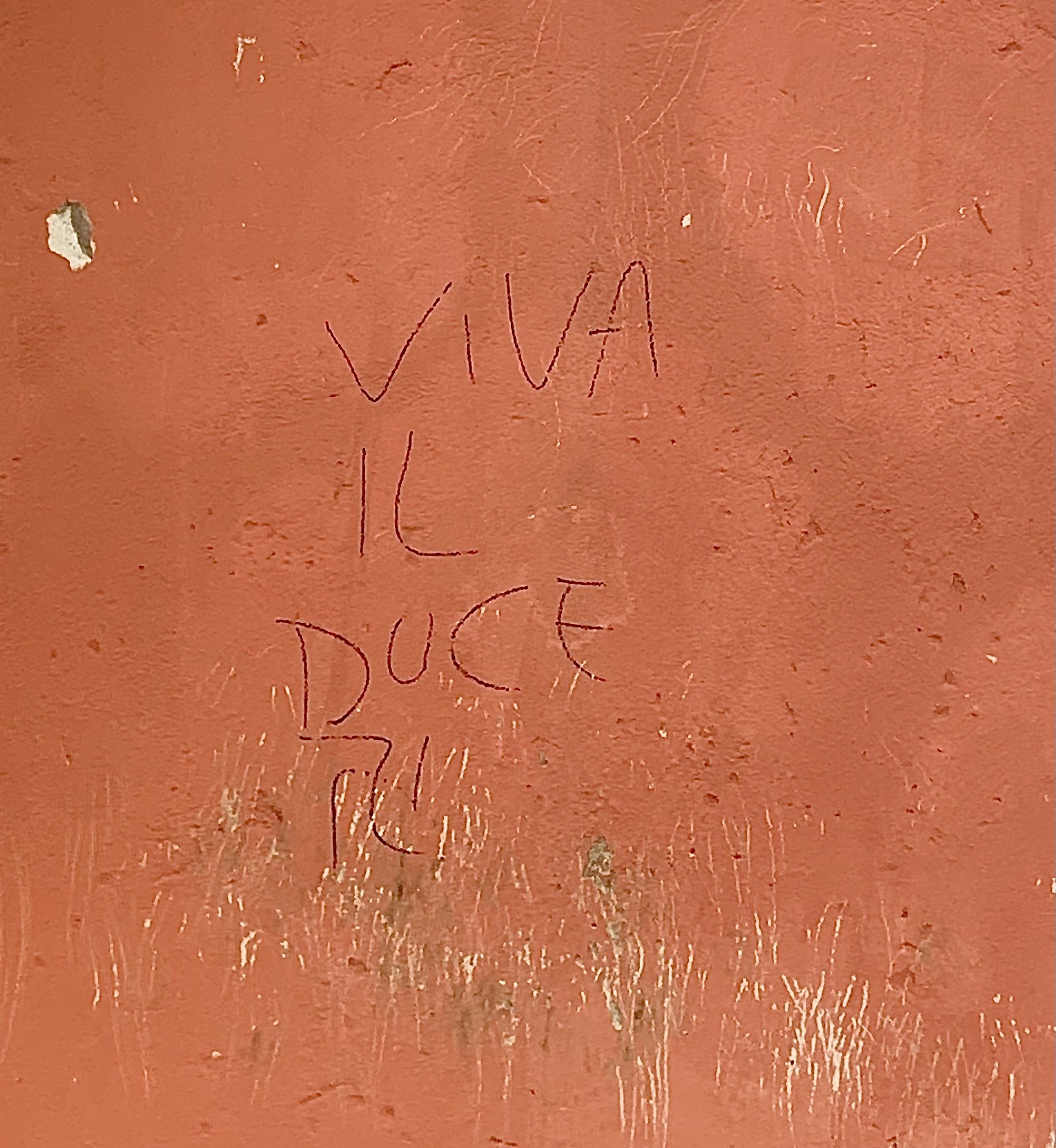
Modern graffiti supporting Mussolini, stating "viva il duce" or "long live the leader". Photographed by Reid Graham.
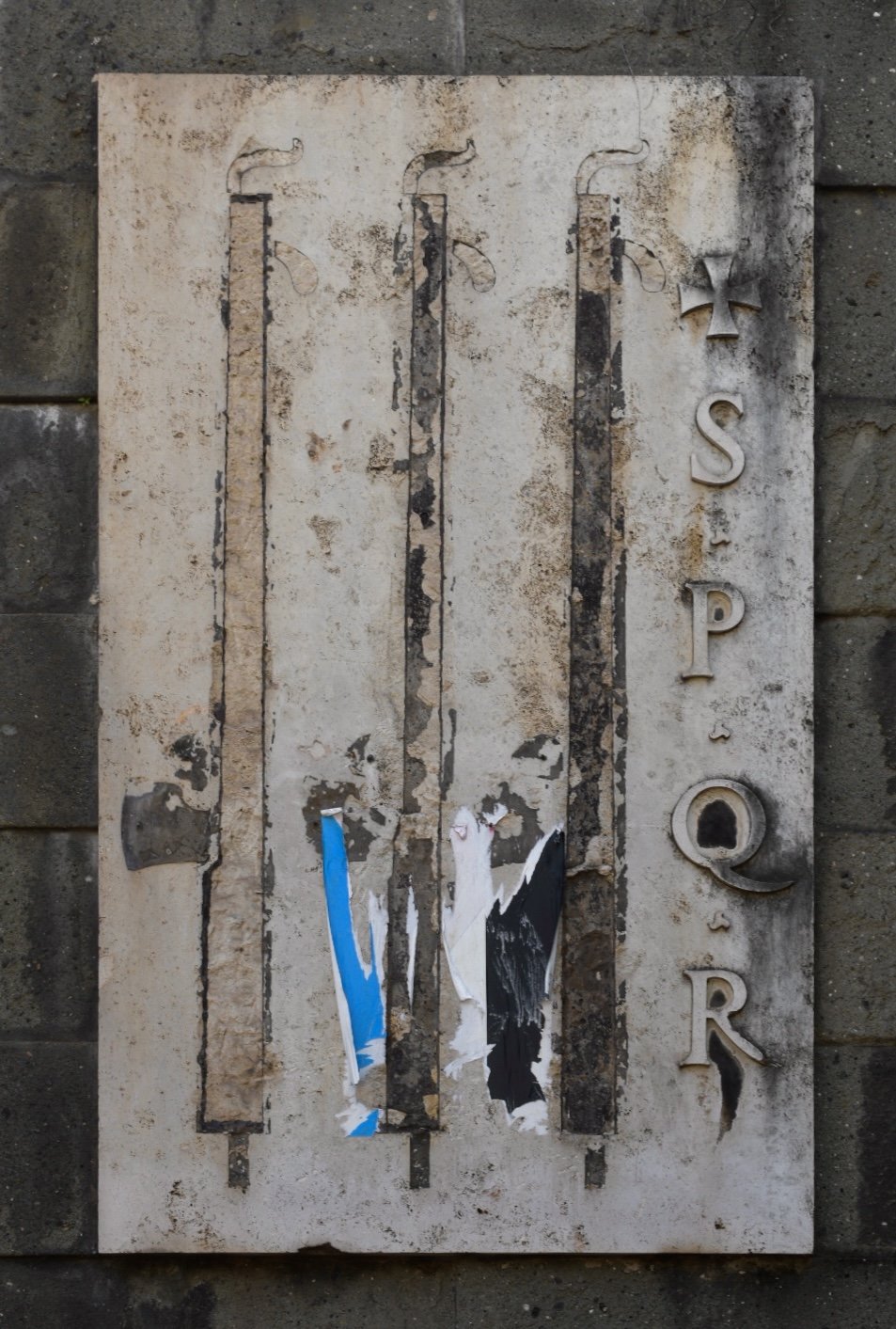
SPQR and remnants of fasces on a fountain. Photographed by Reid Graham.
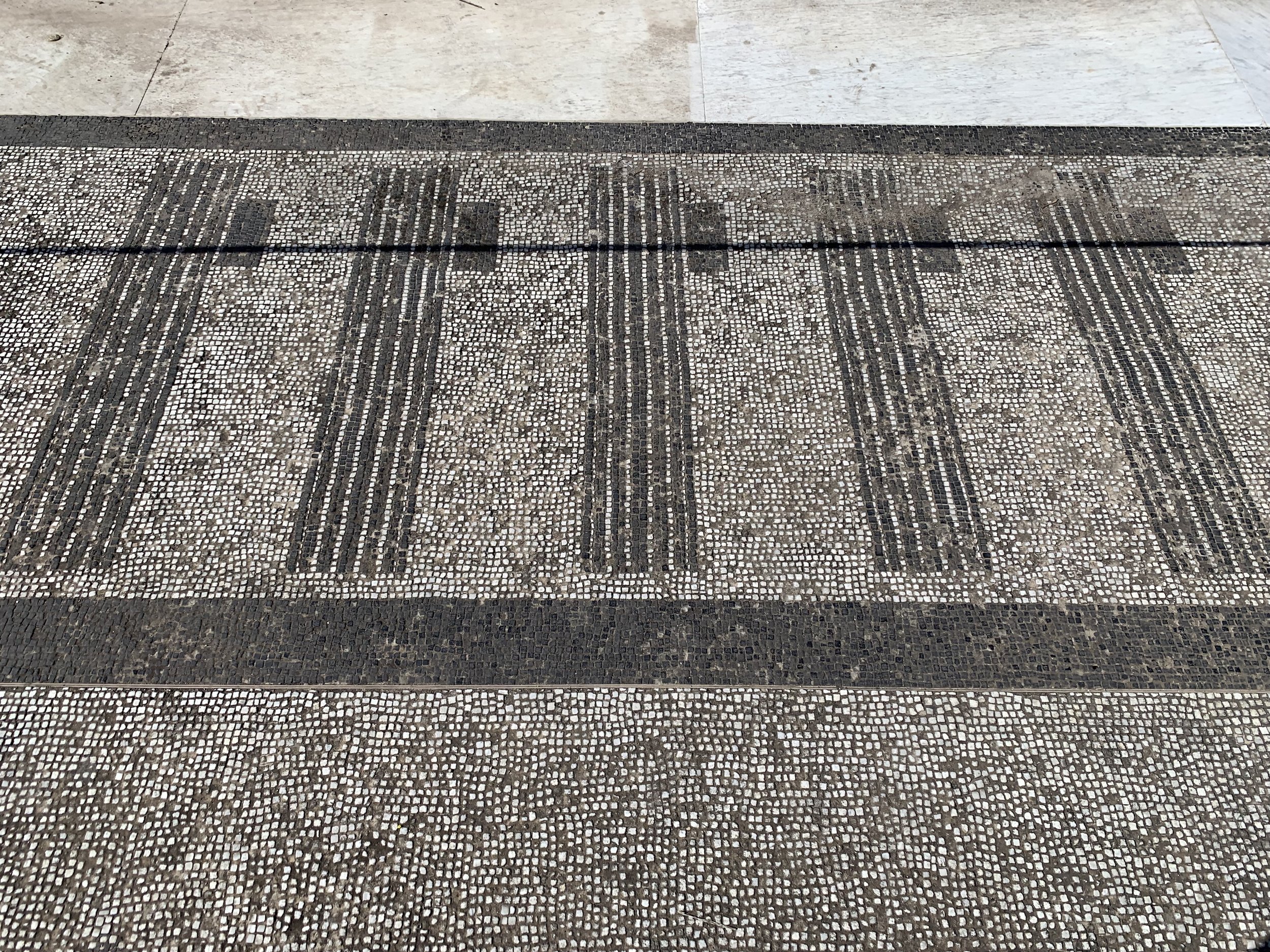
Fasces mosaic at the Foro Italico. Photographed by Reid Graham.
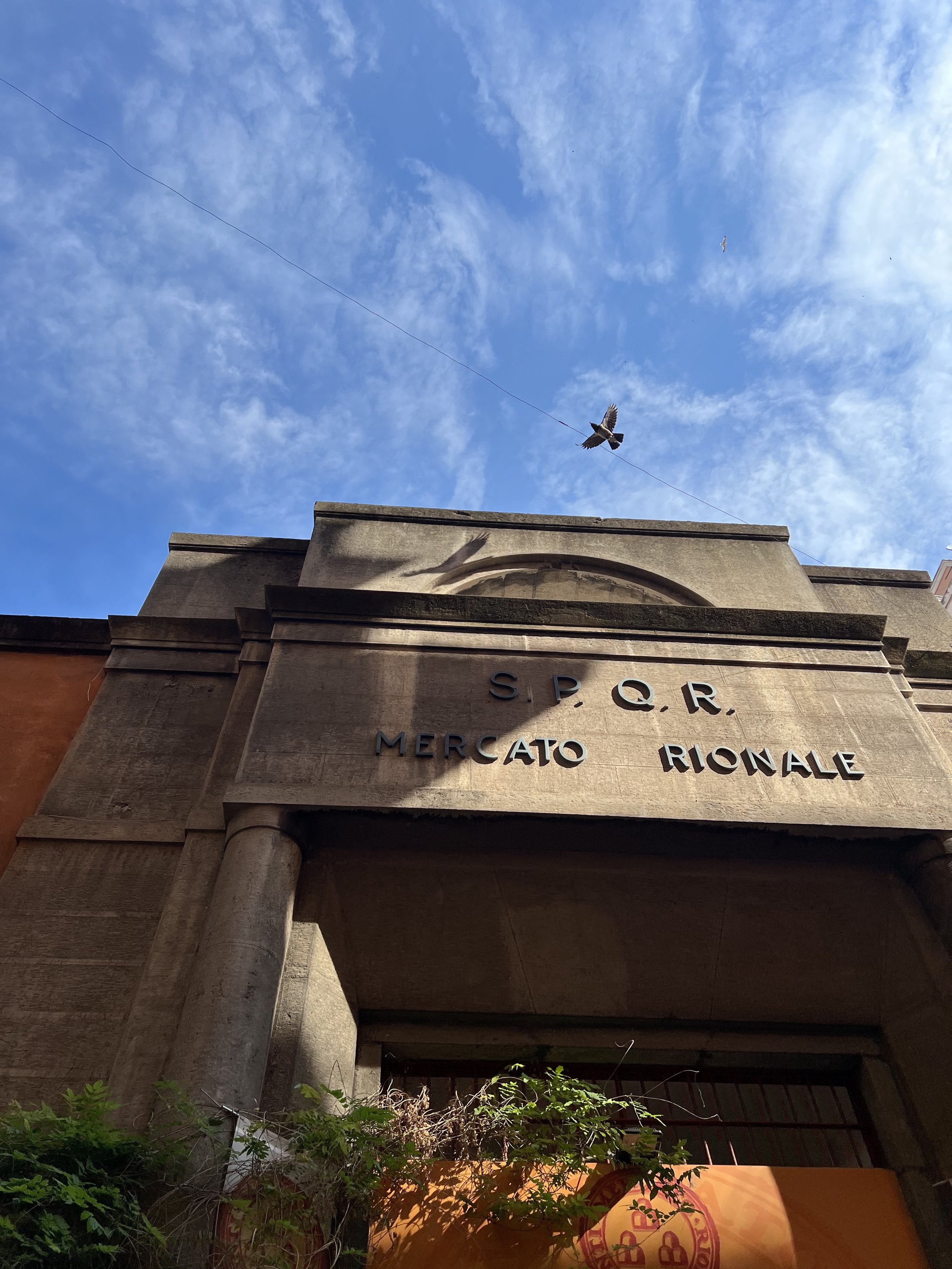
SPQR emblazoned on a fascist-era market. Photographed by Devin Chaldecott.
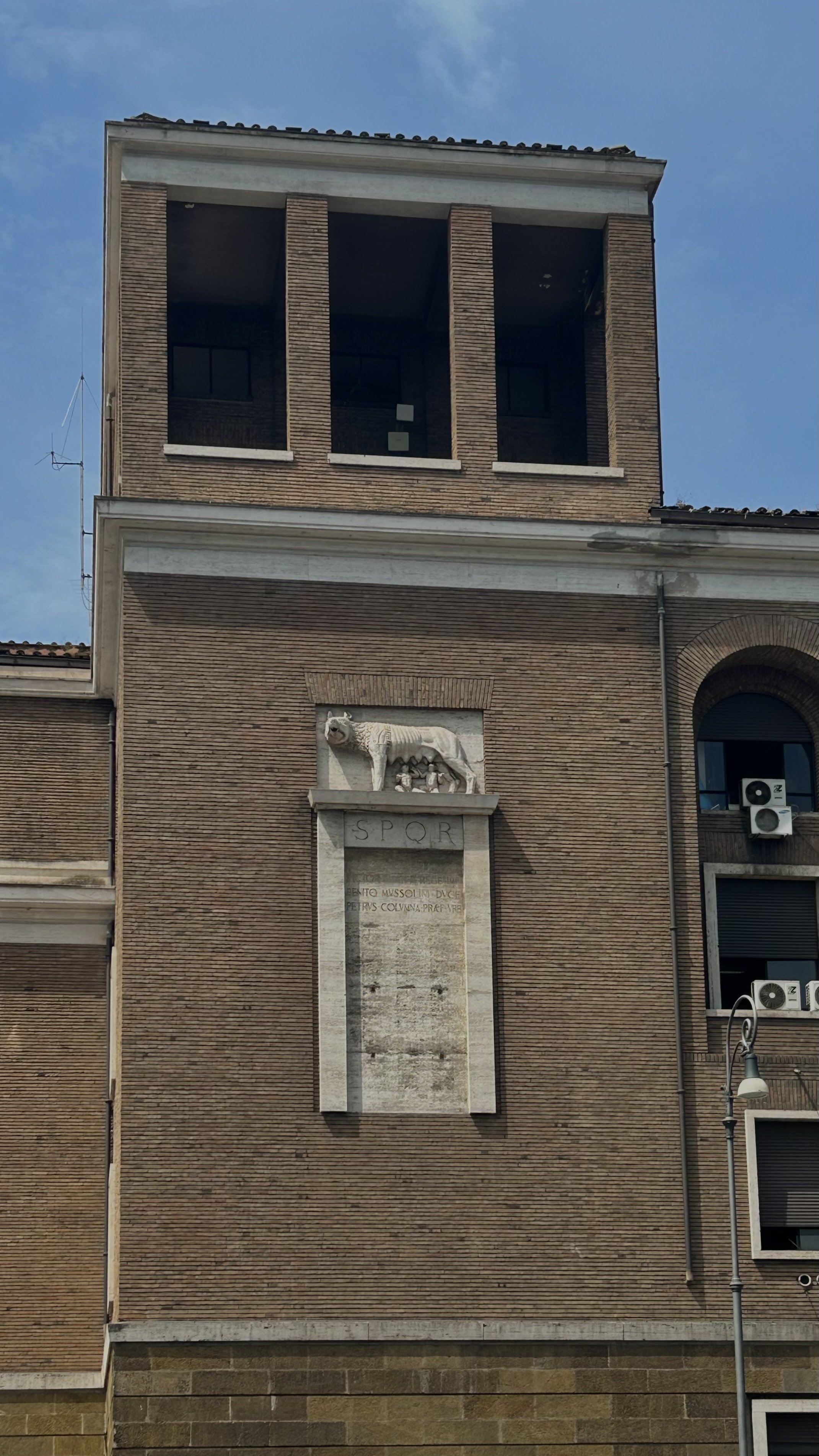
Romulus, Remus, and the She Wolf. Photographed by Audrey Huhn.
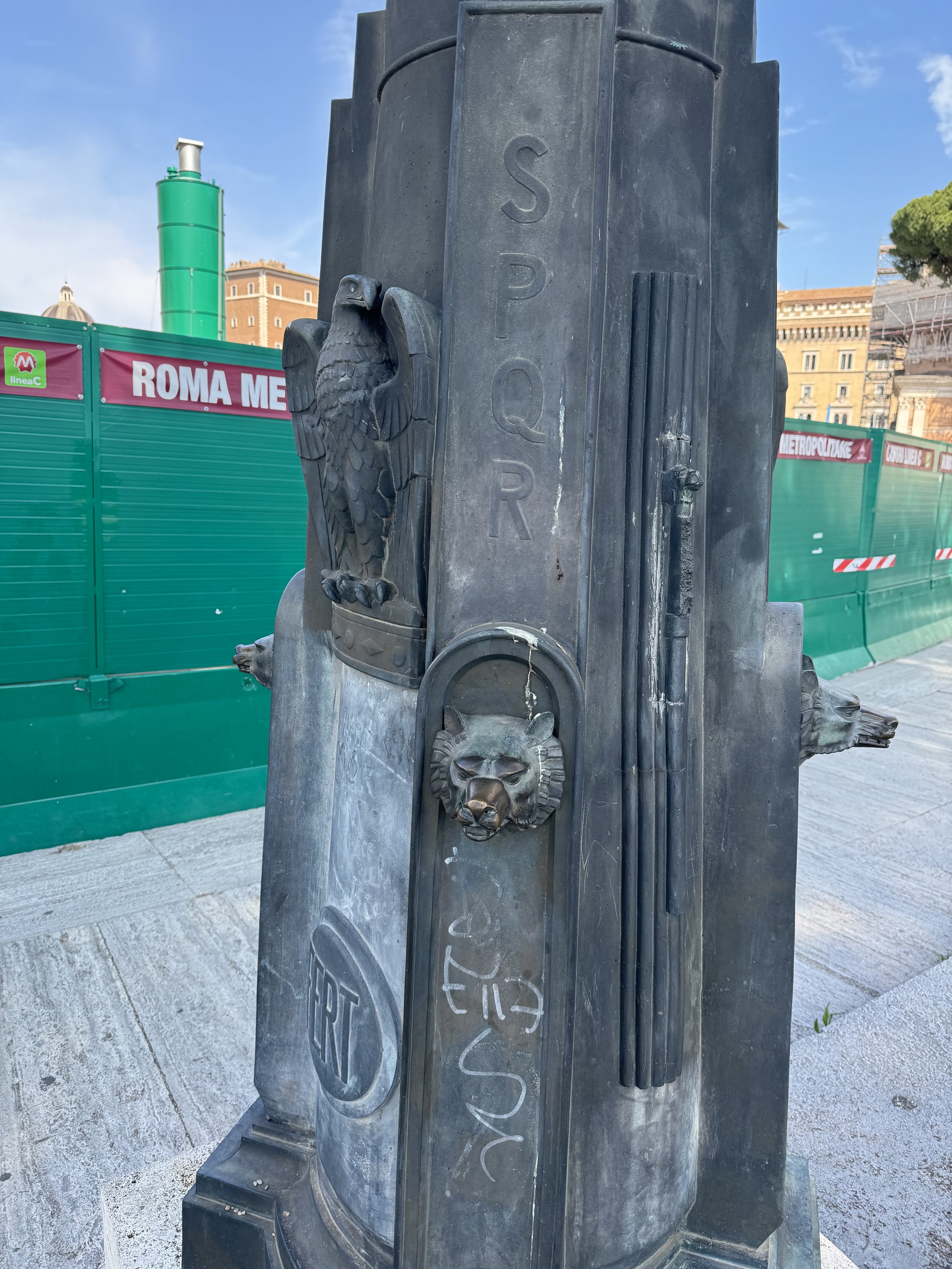
Fascist iconography on a streetlight in Piazza Venezia. Photographed by Peter Ankerberg.
AXIAL PLANNING
While this exhibition has worked to demonstrate how the Fascist regime has altered the city through various architectural tactics, it also aims to expose the large-scale urban reconstruction techniques that were carried out by the regime. Such as the calculated demolition of lower-class and quality housing to create a larger street network that better fits the intentions of the regime. Through axial planning methods, the regime was strategically able to modify the flow of people throughout the city and lead them to specific destinations. This could be leading people into sites such as the Vatican with the Via della Conciliazione, or Piazza Navona with the Corso del Rinascimento. This could also be seen in the newly constructed EUR district, with the Via Imperiale (Via Cristoforo Colombo), Viale Europa, or Viale della Civiltà del Lavoro. These tactics also allowed for a focus on critical monuments or sites that were important to the regime.
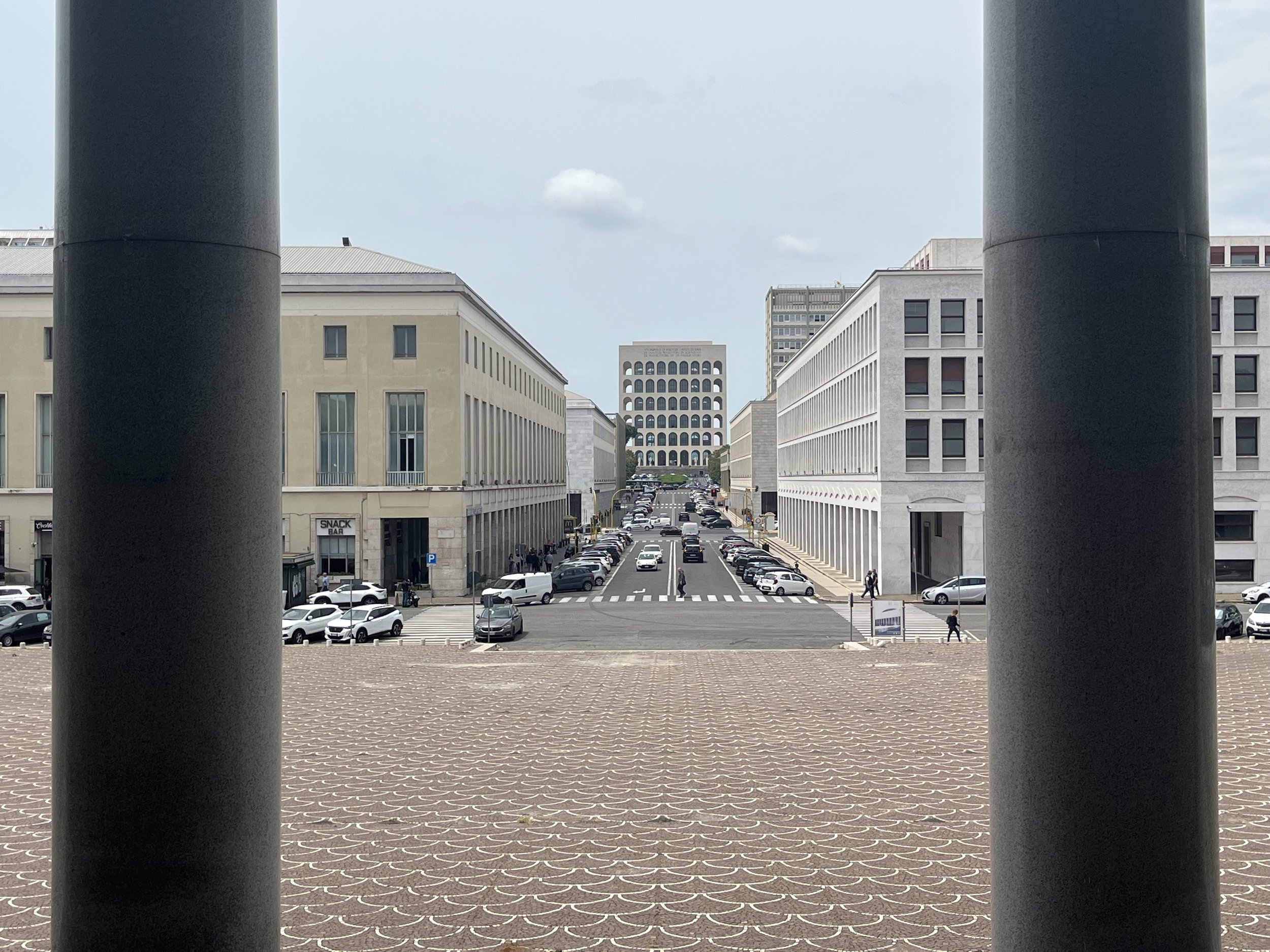
View towards Palazzo della Civilta Italian from Palazzo Dei Congressi along the Viale della Civilta del Lavoro. Photographed by Luke Lynch.

View along Viale Europa looking towards Parrocchia Santi Pietro e Paolo. Photographed by Luke Lynch.
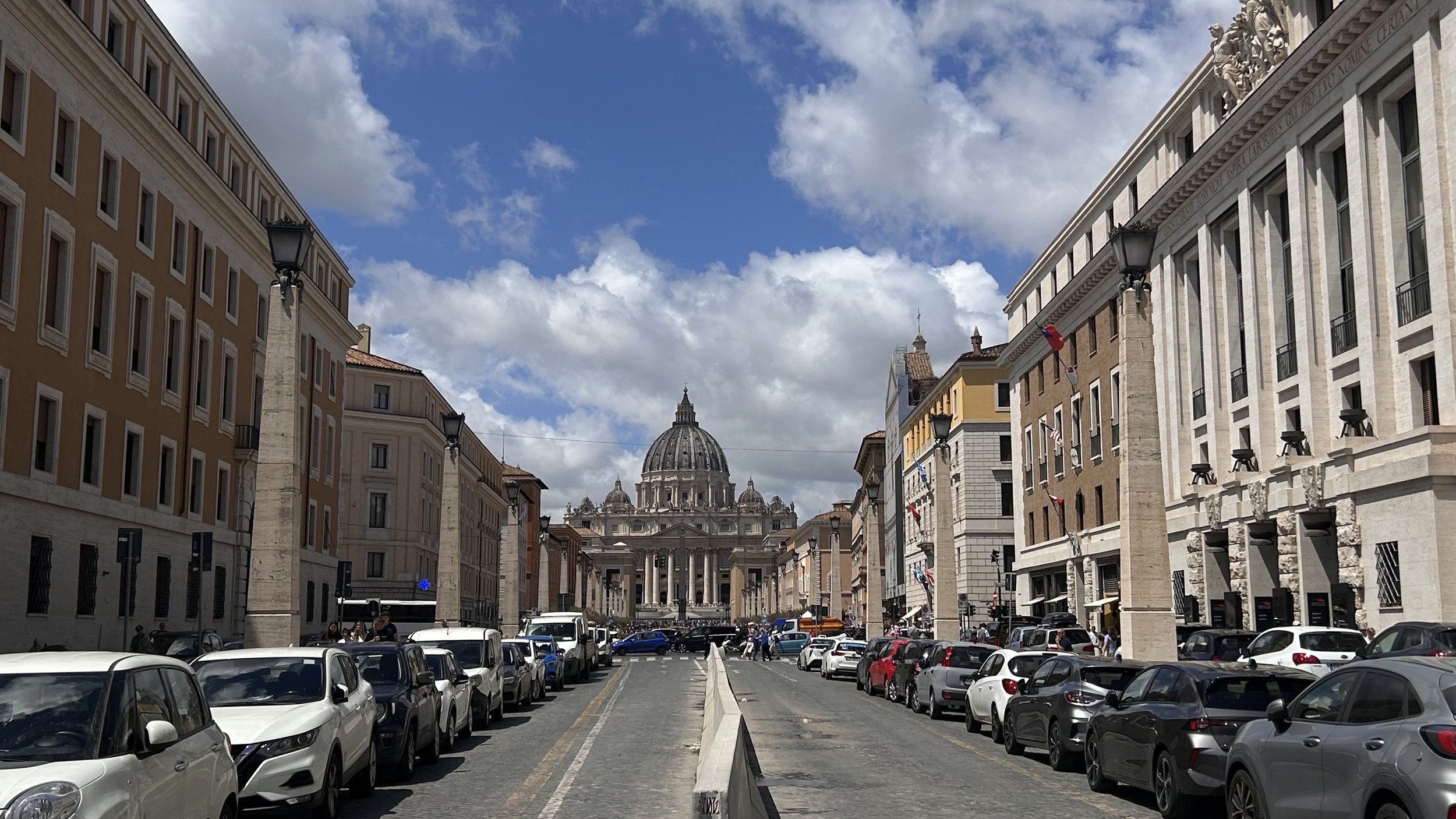
View towards St. Peter's Basilica along the Via della Conciliazione. Photographed by Luke Lynch.

View along Viale della Civilta Romana in the EUR district. Photographed by Audrey Huhn.
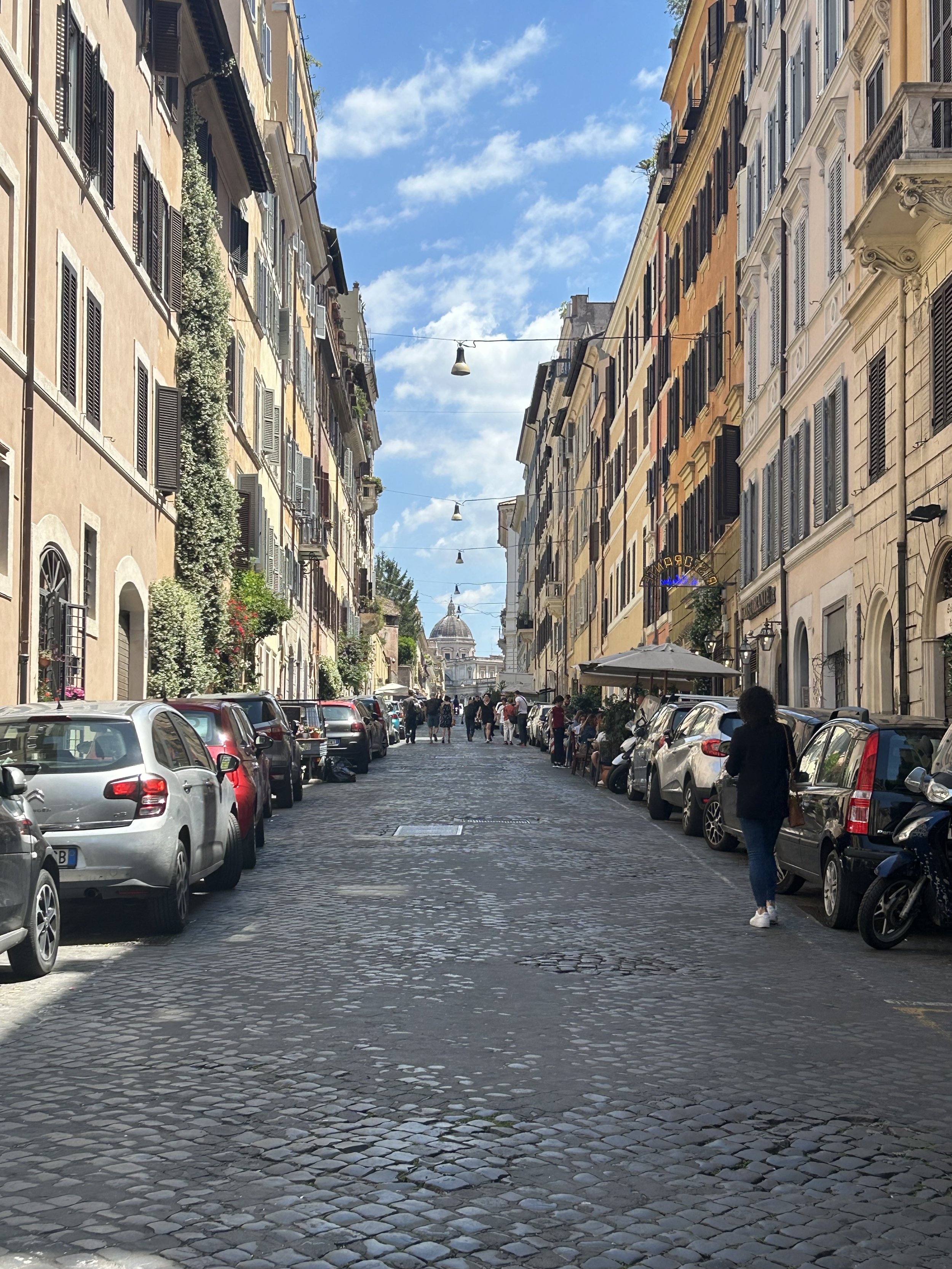
View towards Santa Maria Maggiore, showing how the fascist theme of axial planning continued throughout history. Photographed by Audrey Huhn.
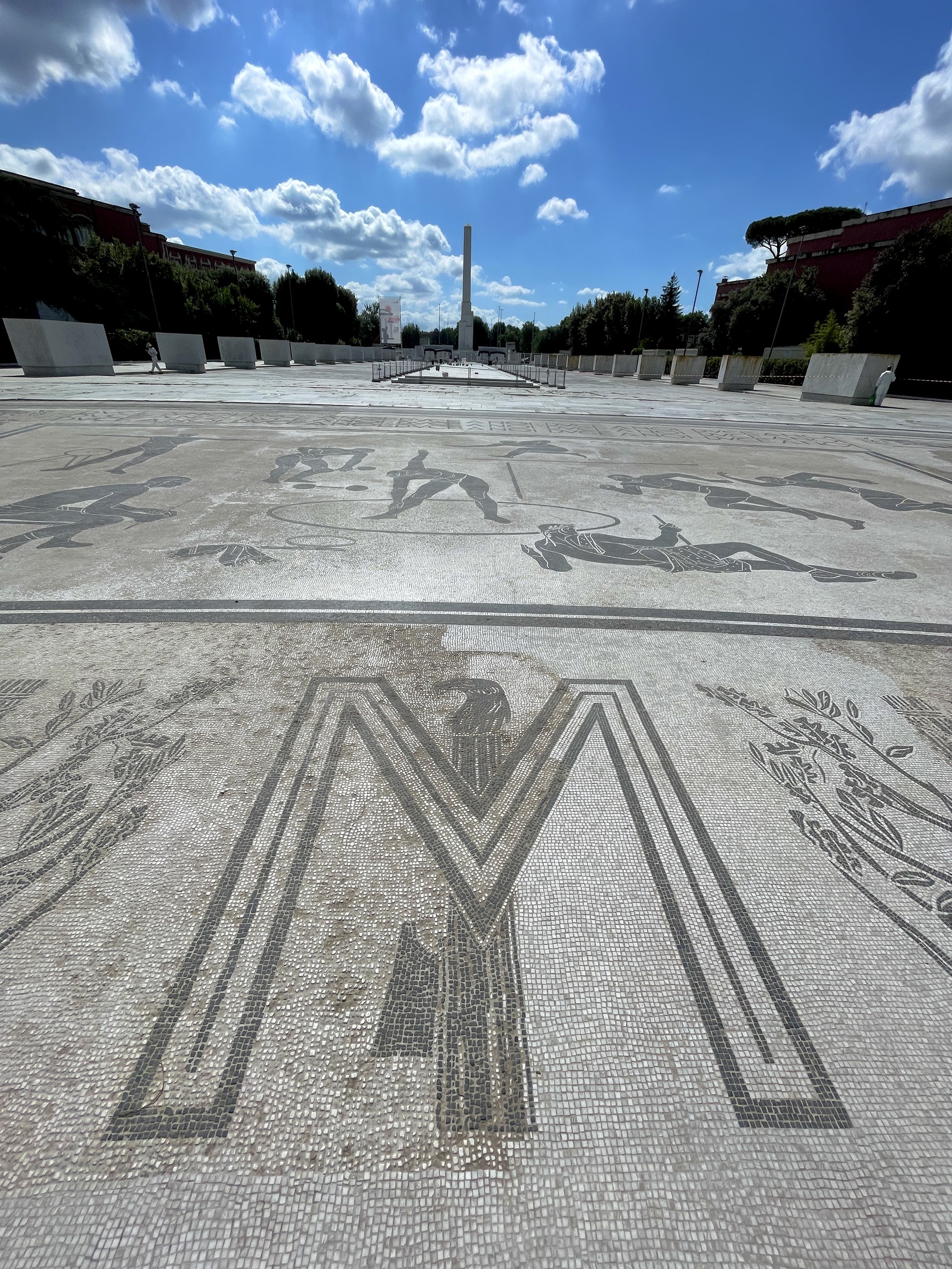
View towards Mussolini's Obelisk at Foro Italico. Photographed by Erin Hobbs.


